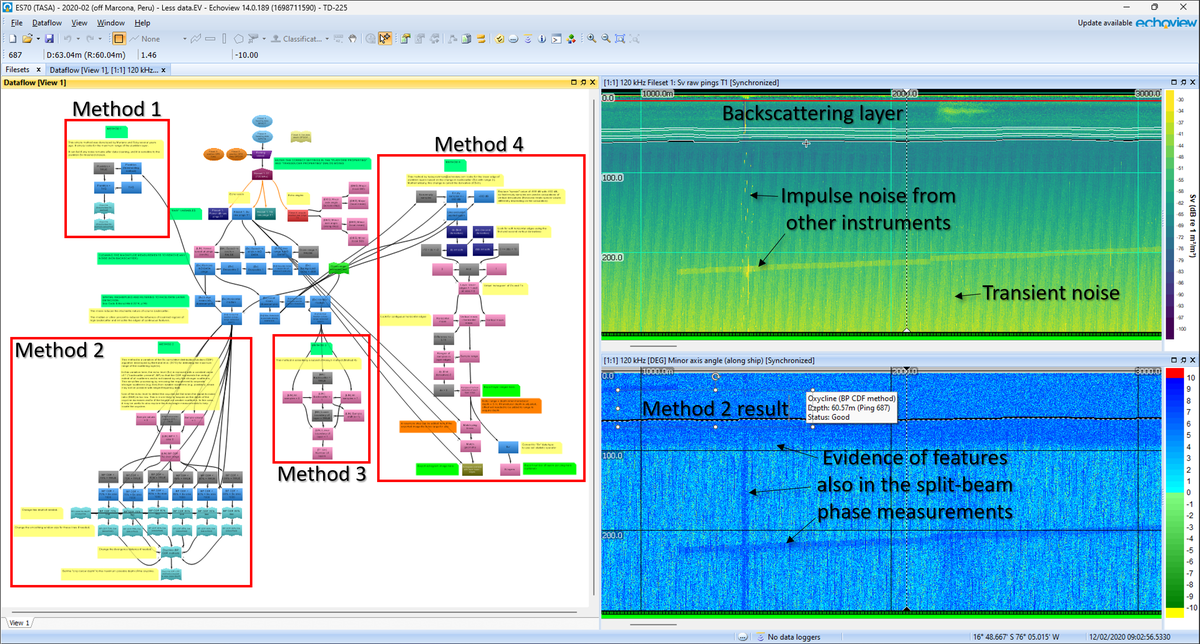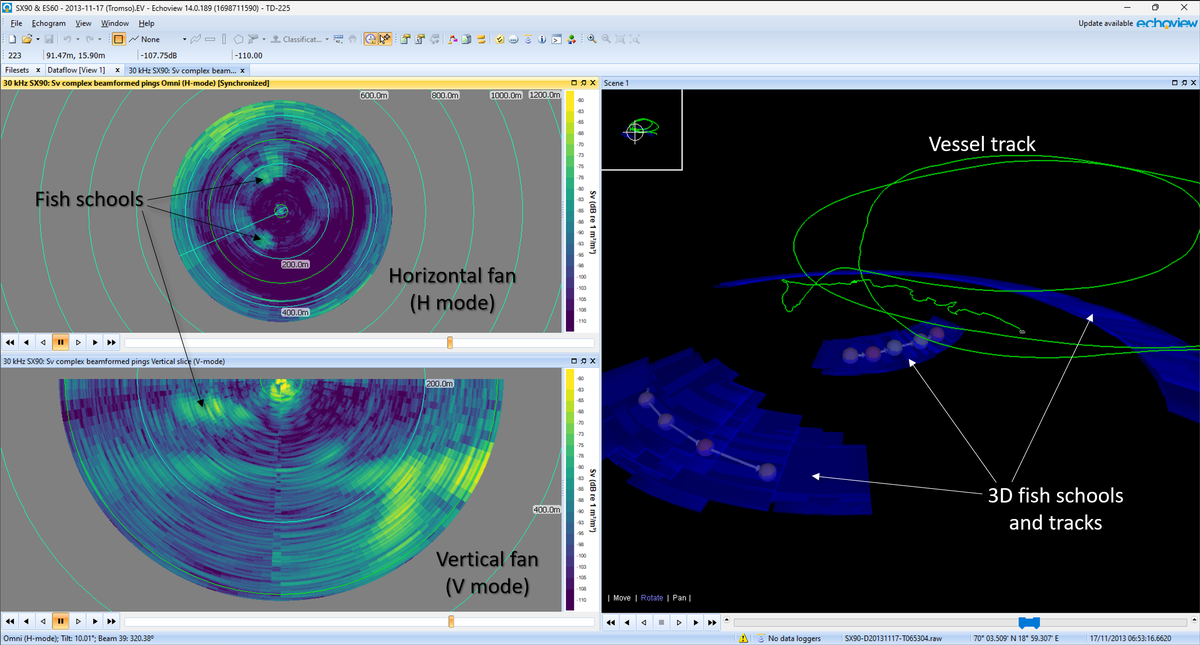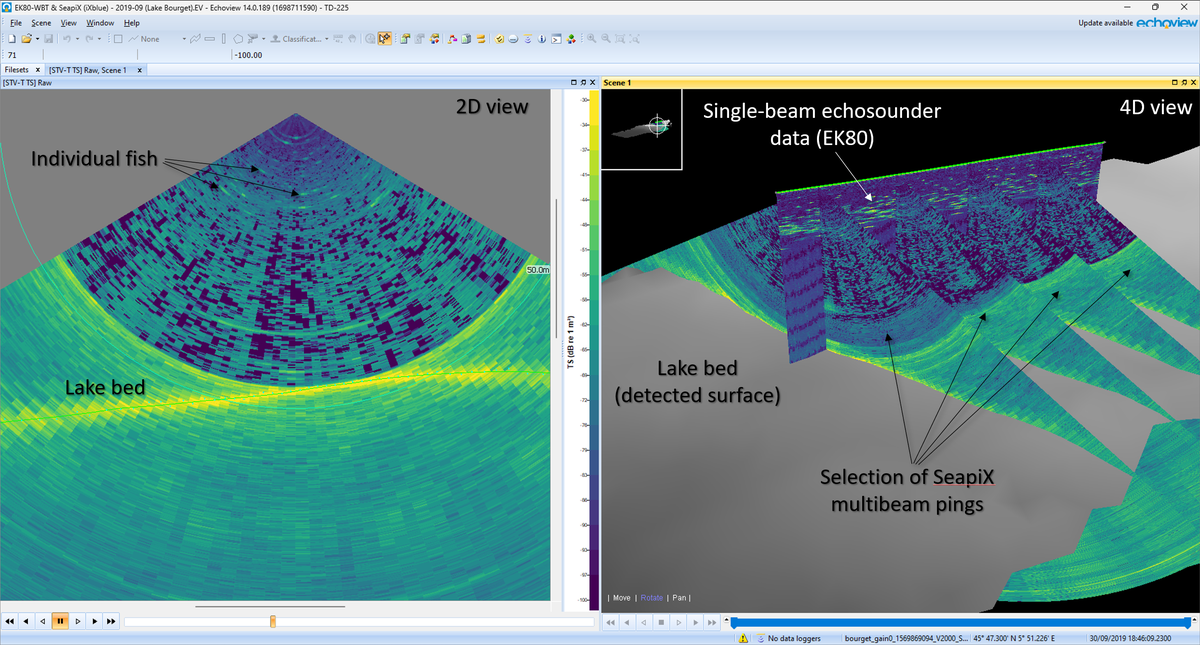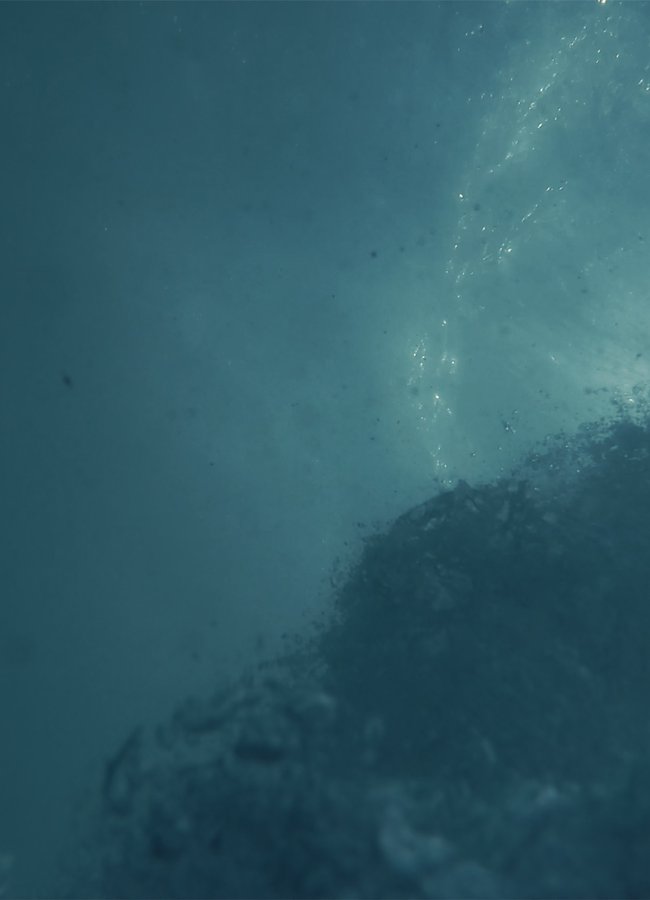In November this year, Echoview Software hosted a 1-day data-processing workshop in Concepción, Chile following the SPRFMO Symposium on the State of the Art of Habitat Monitoring. Many thanks are due to the symposium organizers for arranging the workshop venue, refreshments, and amazing Spanish interpreters (Maria and Carolina).
The workshop was facilitated by Echoview educator, Dr. Toby Jarvis, and attended by 14 scientists from Chile and Peru, who came to learn about and discuss: (1) algorithms for detecting the oxycline depth using single-beam echosounder data; (2) omnidirectional multibeam-echosounder (omnisonar) data processing; and (3) SeapiX multibeam-echosounder data processing.
Oxycline detection
The oxycline depth is an important indicator of available habitat for pelagic animals, and echosounders are perhaps the best tool for monitoring its spatial and temporal extent (e.g., Bertrand et al. 2010). The general idea is that biological backscattering layers visible on echograms are indicative of the oxycline depth.
An ongoing challenge is to develop robust, automated methods for accurately detecting the oxycline depth in single-beam echosounder data collected routinely from fishing and research vessels (typically Kongsberg Discovery’s Simrad ES60, EK60, and EK80 systems). During the workshop, four algorithms were presented and discussed (Fig. 1). These were ‘conventional’ algorithms in the sense that they rely on a predetermined numerical ‘recipe’. Also discussed was the exciting potential of machine-learning algorithms to meet this challenge. We look forward to further discussions in this space.

Omnidirectional multibeam echosounders (omnisonars)
Omnidirectional multibeam echosounders such as the Simrad SX90 and the Furuno FSV-25 are designed and used primarily to support fishing operations. The potential to also use these instruments as quantitative research tools has been well documented (e.g., Peña et al. 2021) and they are now poised for widespread scientific use, particularly for studies of schooling fish.
During the workshop, the fundamental tools and techniques for visualization and processing of omnisonar data in Echoview were presented (Fig. 2). This provided an introduction to a more detailed omnisonar data-processing training course run by Dr. Hector Peña over the next four days.

SeapiX multibeam echosounder
The SeapiX from Exail (formerly iXblue) is a split-beam multibeam echosounder that can be used for scientific research (Mosca et al. 2016). This instrument can provide information about the distribution and target strength of individual fish, and the morphology and volume backscattering strength of fish schools. During the workshop, the fundamental tools and techniques for visualization and processing of SeapiX data in Echoview were presented (Fig. 3).

If you wanted to chat more about any of these topics or arrange an Echoview workshop for a future event, please email our team at support@echoview.com; we would love to hear from you.

